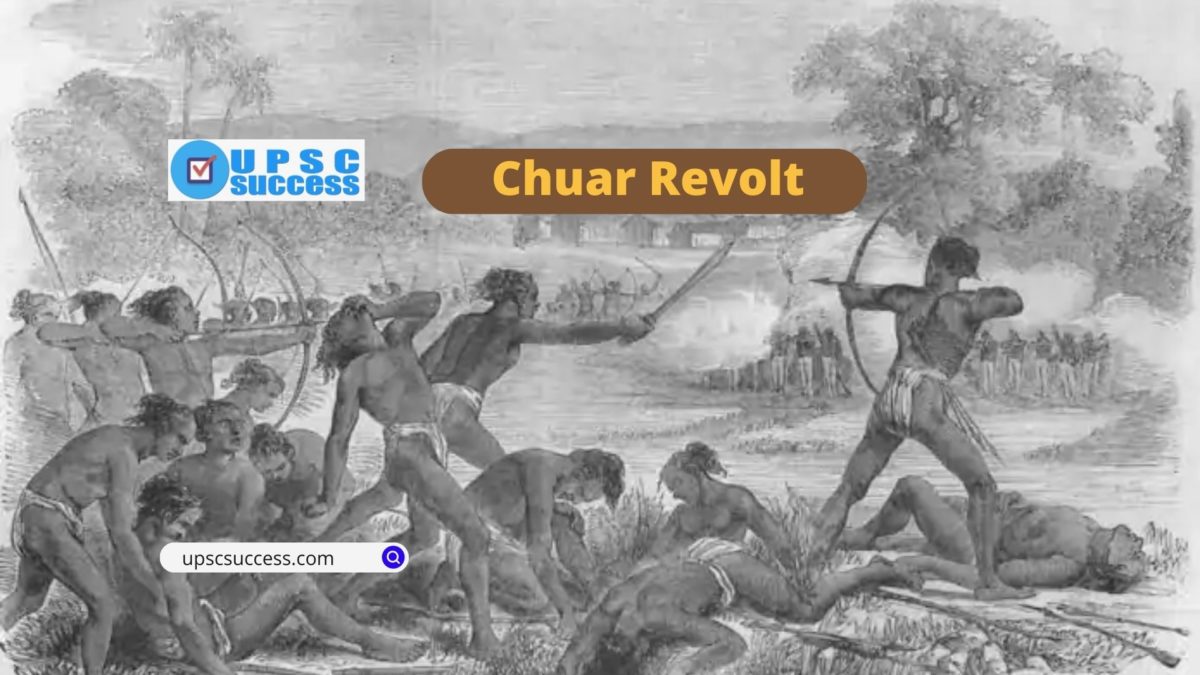Famine-enhanced land revenue demands, and economic distress goaded the Chuar aboriginal tribesmen of the Jungle Mahal of the Midnapore district and also of the Bankura district (in Bengal) to take up arms.
These tribals were basically farmers and hunters.
The uprising lasted from 1766 to 1772 and then, again surfaced between 1795 and 1816.
The term Char or Chuar was used for local tribals in Bengal and it was a derogatory word {meaning pig}.
The leader of this revolt was Durjan Singh, a displaced Zamindar who along with his 1500 followers created havoc.
Some historians object the use of term “Chuar” for this rebellion because it was derogatory term used by ruling class. Some want this revolt to be named as ‘Freedom Struggle of the Jangal Mahal’.
FAQs
The Chuar Mutiny, led by Durjan Singh, was at its height in 1798-99, but was crushed by the Company’s army.
The Famine, enhanced taxes, oppressive demands and economic distress due to famines were common reasons of revolts of that period. The term Char or Chuar was used for local tribals in Bengal and it was a derogatory word {meaning pig}.

